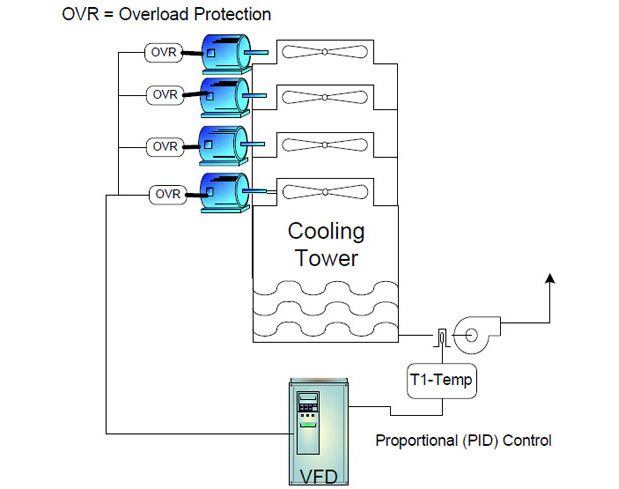the basic idea is that the AC from the line is turned into higher voltage DC. This is then switched on and off using what they call pulse width modulation out six pins to 3 pairs of drivers in such a way that you simulate 3 sine waves 120 degrees apart.
After that it's just a matter of what voltage and frequency are created. The natural inductance and capacitance of the motor is enough of a filter to make that ON/OFF high voltage be smoothed into something like a sine wave. Change the frequency and you get a different speed.
No wonder we are having trouble communicating. You have assumed I don't know what a VFD is.....LOL! What you have just described is the basic operating principal of a VFD. If I were describing it, I'd add that VFD's are basically fancy inverters. Most are even called inverters.
Sometimes the process starts with a DC voltage like a battery. Sometimes with AC at various voltage levels. Regardless of which it is, they then create a high voltage DC which is subsequently chopped to create single or triple phase AC outputs. As you have said previously, the actual process is quite a bit more complex.
My interest is not in how a VFD works. No wonder you got leery about it. I don't think I'd want to describe how it works to most people either - especially not on a forum. But maybe over liquid refreshments or in a meeting. I only describe it generally above to give you some confidence in my knowledge level.
My interest is this case is not about how a VFD works, it is only about this weird frequency control "INPUT" that you described at the beginning of your thread. I am familiar with sensor control, sensorless vector control, direct control, etc. I'm also familiar with the way most VFD's use a 10V divider potentiometer to provide user control of output frequency.
However, I'm not familiar with any frequency input control other than feedback from the output to fine tune the control system.
The article I linked to used some terminology in it that I thought might be what you referred to from your sources. In my view, the article provides a rather confusing description because it isn't an input in the normal sense, it's more of an output.
Nonetheless, I was not aware than any of my VFD's varied their output voltage as output frequency changed. That is clearly new info to me. So I plan to do some testing to see what mine are actually doing in that respect.
I confess that it's odd that I didn't notice anything when I was assessing the output noise levels on my oscilloscope. I would have thought that would have jumped out at me as I ran up and down the frequency range watching the noise spikes.
Given that a refrigerator compressor is basically a refrigerant pump (constant high load), the required VFD output is significantly different from what is required for a lathe or a mill that usually sees very low loads - unless the operator likes 80 thou cuts like some members on here! So I can certainly see why an output voltage adjustment is appropriate as output frequency changes. But again, other than for feedback purposes, I see these as outputs not inputs.
Does that help?


